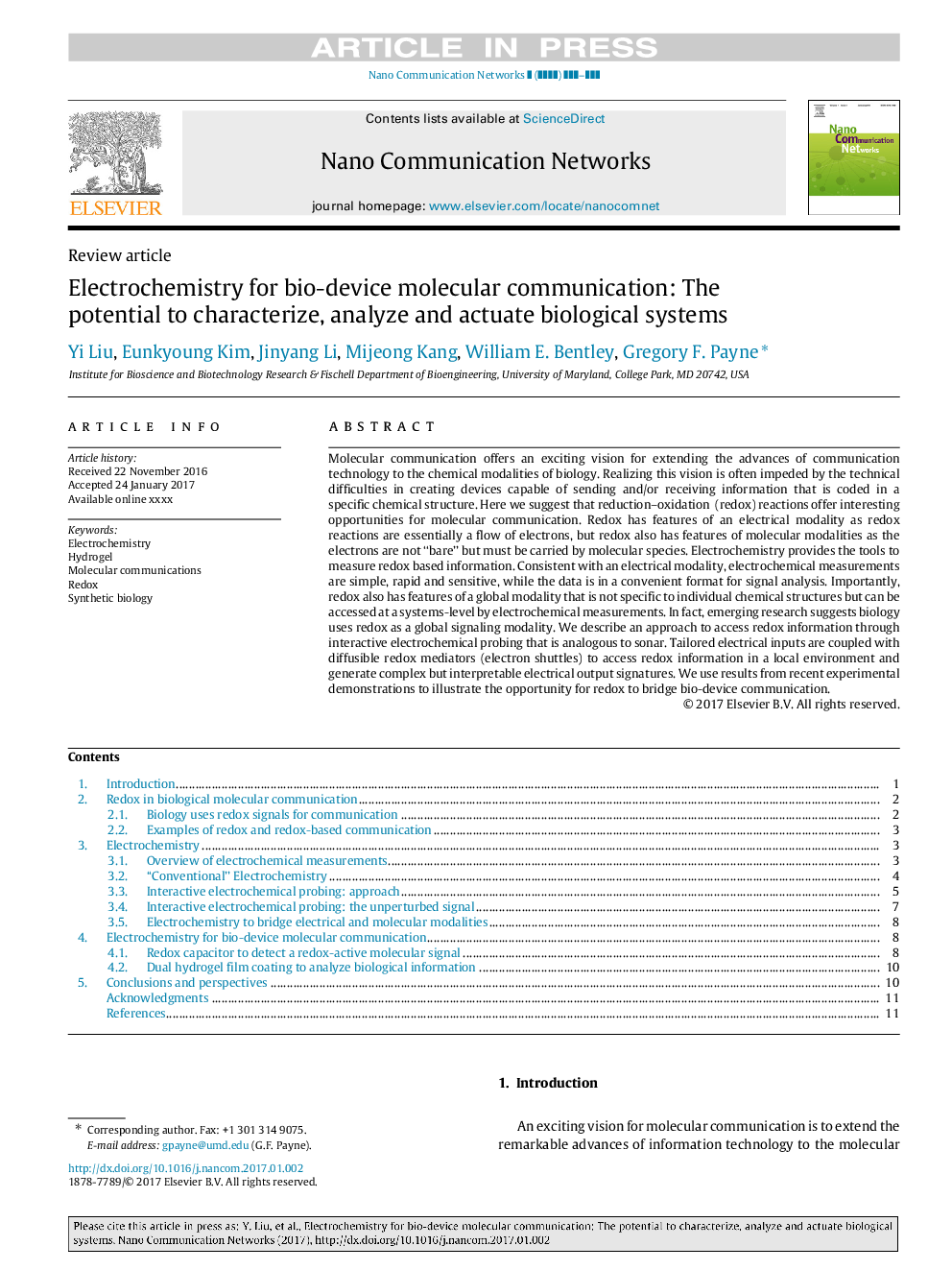| Article ID | Journal | Published Year | Pages | File Type |
|---|---|---|---|---|
| 4956941 | Nano Communication Networks | 2017 | 14 Pages |
Abstract
Molecular communication offers an exciting vision for extending the advances of communication technology to the chemical modalities of biology. Realizing this vision is often impeded by the technical difficulties in creating devices capable of sending and/or receiving information that is coded in a specific chemical structure. Here we suggest that reduction-oxidation (redox) reactions offer interesting opportunities for molecular communication. Redox has features of an electrical modality as redox reactions are essentially a flow of electrons, but redox also has features of molecular modalities as the electrons are not “bare” but must be carried by molecular species. Electrochemistry provides the tools to measure redox based information. Consistent with an electrical modality, electrochemical measurements are simple, rapid and sensitive, while the data is in a convenient format for signal analysis. Importantly, redox also has features of a global modality that is not specific to individual chemical structures but can be accessed at a systems-level by electrochemical measurements. In fact, emerging research suggests biology uses redox as a global signaling modality. We describe an approach to access redox information through interactive electrochemical probing that is analogous to sonar. Tailored electrical inputs are coupled with diffusible redox mediators (electron shuttles) to access redox information in a local environment and generate complex but interpretable electrical output signatures. We use results from recent experimental demonstrations to illustrate the opportunity for redox to bridge bio-device communication.
Related Topics
Physical Sciences and Engineering
Computer Science
Computer Networks and Communications
Authors
Yi Liu, Eunkyoung Kim, Jinyang Li, Mijeong Kang, William E. Bentley, Gregory F. Payne,
